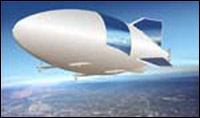Here you can find a summary of innovations in the fields of information and data processing and up-to-date developments on IT equipment and hardware.
This area covers topics such as IT services, IT architectures, IT management and telecommunications.

A 500-member forum of industry, government and academic technical experts, led by the National Institute of Standards and Technology (NIST), has released a new draft set of cyber security requirements for industrial control systems.* These security requirements, developed by the Process Control Security Requirements Forum (PCSRF), are intended to be used in procurement documents for new industrial control systems or components. The implementation of these requirements will help protect the nation&

Researchers at New Jersey Institute of Technology (NJIT) are putting a 21st century spin on a 19th century technology to make the nation’s ports and coastal waters safer. Airships — known today mainly for advertising flyovers at football games — are the core of a new coastal surveillance system in development for the Missile Defense Agency (MDA) of the U.S. Department of Defense. But the new models will bear little resemblance to their predecessors. These High Altitude Stratospheric Air

A Finnish company has launched a product that can be used to prevent children and young people from visiting adult pages on the Internet.
In addition to pages in Finnish, the Block! software of the company Hitback.fi Oy also identifies offensive European pages. ”The problem with other than Finnish software is that it blocks access to, e.g., the pages of the Finnish municipality Pornainen or the OKO Bank of Pornainen,” states Mr Kimmo Junttila, the company’s managing director.

Smart watch system could help busy, forgetful people keep track of necessities
In the not-so-distant future, your wristwatch could stop you if you try to run out the door without the necessities you need for the day, like your keys, wallet or cell phone. At work, it could prompt you for important items needed for a meeting or a business lunch. In an academic setting, it could remind students which books to take as they hurry out the door for class. Think of it as a technologica

Within three years one of the most advanced data encryption systems developed to date could go into commercial use thanks to the work of OCCULT, and its gigantic strides forward in laser-based chaotic carriers to transmit data through fibre-optics.
The cutting-edge technique, which employs synchronised laser emitters and receivers to encrypt information at the hardware level, represents an important qualitative upgrade to existing security systems for protecting the transmission o

Many accidents, especially at night, are caused by motorists having to take their eye off the road as they look down to see the car instruments. Head-up displays would be a solution, were they not so expensive and bulky. OEDIBUS has an innovative solution.
Driving at night is dangerous. Research shows that, although less than one third of all driving is done at night, over 50 per cent of the fatalities occur during this period. For pedestrians, 60 per cent of fatalities occur during the hours